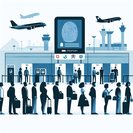
Switzerland’s Federal Assembly has pushed through the most sweeping revision of the Federal Act on Foreign Nationals and Integration (FNIA) in more than a decade. After an all-night session that wrapped up just after midnight on 21 November, both chambers agreed to introduce annual, nation-wide ceilings for several classes of work permits issued to third-country nationals. Unlike today—where the Federal Council revises quotas by ordinance—the new model will see Parliament vote every autumn on a global envelope that cantons must respect when allocating individual B-residence and L-short-stay permits. Lawmakers argued that the change gives businesses earlier visibility while enabling tighter political oversight after net immigration hit a 17-year high in 2025.
A second pillar of the reform mandates systematic biometric checks—four fingerprints plus a live facial image—at all external land borders, aligning Swiss practice with the EU’s Entry/Exit System already being rolled out at airports. Customs posts on motorways to France, Italy, Austria and Germany will be upgraded with e-gates and sheltered kiosks by mid-2026, at an estimated cost of CHF 240 million to be recouped through an CHF 8 surcharge on biometric residence permits. Businesses that shuttle staff across borders daily, especially in Ticino and Geneva, are bracing for longer peak-hour queues during the transition.
![Swiss Parliament Passes Landmark Immigration Reform: Annual Permit Ceilings & Nationwide Biometric Border Checks]()
Employer groups broadly welcomed the predictability that fixed caps bring but unsuccessfully lobbied for special exemptions for critical-infrastructure projects. Instead, Parliament created a small contingency reserve that the Federal Council can release if labour shortages threaten hospitals, rail works or data-centre build-outs. Unions fear that stricter quotas could fuel undeclared work and are demanding more resources for labour inspectors.
For global mobility managers the headline takeaway is timing: quotas for the following calendar year will now be published months earlier, giving HR teams a firmer planning horizon. However, companies that rely on large intakes of non-EU talent—IT outsourcers, biotech scale-ups and construction giants—may need to front-load filings or explore intra-company transfers from EU subsidiaries. The biometric component also means that cross-border commuters will have to re-enrol under EES, so employers should factor in potential delays when scheduling early-July project kick-offs.
A second pillar of the reform mandates systematic biometric checks—four fingerprints plus a live facial image—at all external land borders, aligning Swiss practice with the EU’s Entry/Exit System already being rolled out at airports. Customs posts on motorways to France, Italy, Austria and Germany will be upgraded with e-gates and sheltered kiosks by mid-2026, at an estimated cost of CHF 240 million to be recouped through an CHF 8 surcharge on biometric residence permits. Businesses that shuttle staff across borders daily, especially in Ticino and Geneva, are bracing for longer peak-hour queues during the transition.

Employer groups broadly welcomed the predictability that fixed caps bring but unsuccessfully lobbied for special exemptions for critical-infrastructure projects. Instead, Parliament created a small contingency reserve that the Federal Council can release if labour shortages threaten hospitals, rail works or data-centre build-outs. Unions fear that stricter quotas could fuel undeclared work and are demanding more resources for labour inspectors.
For global mobility managers the headline takeaway is timing: quotas for the following calendar year will now be published months earlier, giving HR teams a firmer planning horizon. However, companies that rely on large intakes of non-EU talent—IT outsourcers, biotech scale-ups and construction giants—may need to front-load filings or explore intra-company transfers from EU subsidiaries. The biometric component also means that cross-border commuters will have to re-enrol under EES, so employers should factor in potential delays when scheduling early-July project kick-offs.








